For most equestrians, the halter is the simplest tool in the tack room and there is no reason to dispute this ideology. It is a piece of either leather, nylon, or rope that are a basic necessity when it comes to equine handling. Without it, how would we ever catch, lead and train our trusted steeds?
It is no myth that the halter is a crucial component to the horse-to-human starter pack, a fundamental tool along the road to happy trails if you will. But have you ever considered how many different halters exist and in turn, how these differentiating tools are used in the world of training, showing and pleasure? How can you be sure that you are using the halter that best suits your horse’s trainability, or even your training capabilities?
Choosing the right halter can have a dramatic impact on the training process, showing performance and most importantly, the overall safety of our four-legged friends. A halter’s affectability weighs heavily on proper handling, safe practices, and a better understanding of that particular halter material. Each type of halter serves a different purpose for both horse and rider, a fact that is often overlooked for convenience reasons. In the name of creating a safer yet productive space with your horse, let’s take a look at the most commonly used halters and their proper usage practices.
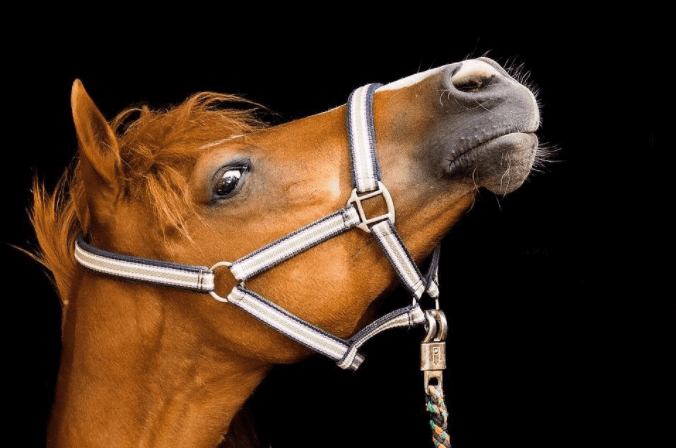
Nylon Halters
Nylon halters are often used in the equine community based on their affordability, color variation and simple application process. While it can be tempting to buy that new bright red nylon halter to match your horse’s shiny red blanket, it is crucial to consider all aspects of a nylon halter before handing over that card.
Nylon halters are made of nylon, obviously, which makes their price tag that much more appealing. A typical nylon halter at your local tack shop runs between $10 to $50. They are often found in many different colors, form bright greens to mellow maroons, to match any and everything in your barn. Their structure is mostly identical to that of leather show halters, with wider nose and cheek pieces, which are secured on the head via a buckle allowing for an adjustable characteristic. This buckle securement also allows for easy placement while in the pasture, giving you are your steed more time in the practice pen.
Uses of Nylon Halters
While nylons are perfectly acceptable for barn use, there are some disadvantages to consider when purchasing this product. First and foremost, these are not training halters. Due to their equally distributed structure, when this halter is used as a training device it is as if you are simply pulling your horse’s entire face from all sides. While this may seem all good and well, if you continue to pull on your horse’s head with the feeling of the pressure coming from all sides, your horse will develop a tolerance to this sensation. Horses are practical animals, so any chance they can right off an outside stimulus as “non-threatening,” they will take that opportunity to save mental energy for other more pressing concerns. It is as if your horse becomes numb to that constant and very annoying pulling feeling, especially if there is no release. With this being said, nylon halters make a great first halter choice for younger horses to simply get them used to the feeling of having equipment on their face. Nylon halters are better suited for trained horses, to be used for catching, grooming and so on. They are perfect for the wash rack, as you can attach tie-clips on each side of the halter, with the various hardware built in.

Nylon Halters and Turnout
Nylon halters have been seen left on horses during turnout, for those horses that are not as keen on being caught. While this may save you some time in the long run for catching that sour mare, it can be severely dangerous to that horse. When horses have any sort of equipment on in the pasture, from halters to blankets, they become one more thing that the horse can get tangled up in, which can take a turn for the worse in a matter of seconds.
Nylon halters are especially dangerous due to the fact that they will not break apart when caught. This can send your horse into a frenzy to escape, potentially causing considerable injury to your horse and anyone who tries to intervene. Keeping this mind, horses should never be turned out with any equipment on their face to avoid the dangers of getting tangled and caught.
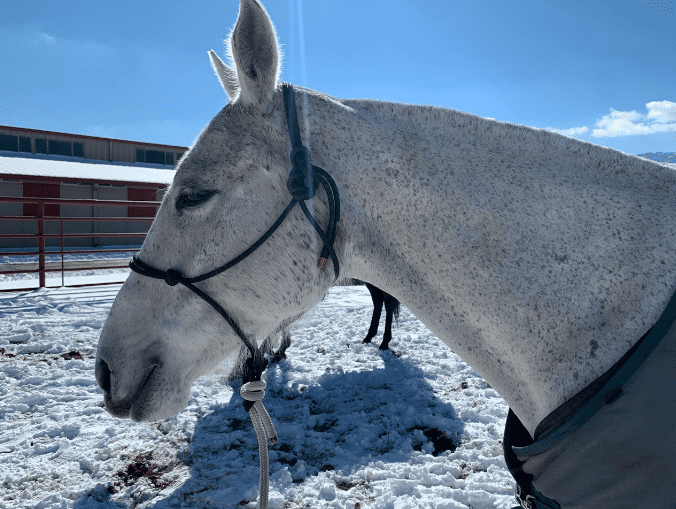
Rope Halter
When it comes to training, the rope halter is your right-hand man. The rope halter is most commonly used in the western horsemanship community, used for training colts and young horses, but can be used virtually at any training level. Made to last, simple in design, the rope halter is one that you don’t want to miss out on.
Made from different sturdy rope materials, this halter can be found in nearly every tack shop. Considering their simplistic design, the rope halter runs on the more affordable side of the market, making your purchase choice that much easier. Something to keep in mind when buying is that halter pieces and lead ropes will typically be sold separately, which can result in a more costly receipt. For those more creative, rope halters can also be made at home, all you need is some thick rope and some extra time. There are several YouTube videos and demonstrational videos online covering the very subject. Just be sure that when picking up rope from your local hardware store, that are you not choosing based on color alone but rather strength and comfortability for your horses. In addition, be sure to use a thicker rope for the lead line portion of your project.
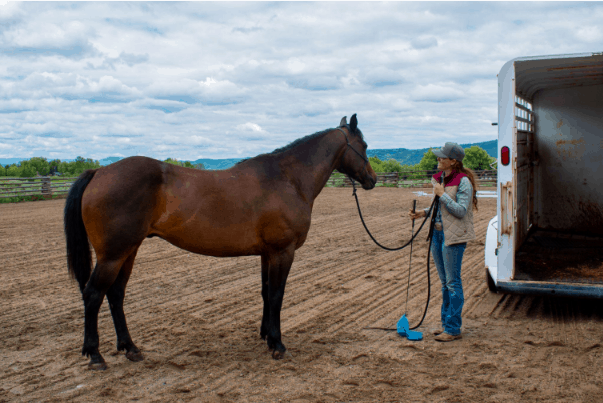
Rope halters are constructed with several knotted points which complete the head piece. While they may seem unimportant, these knots are crucial to the essence of using a rope halter. Horses learn most effectively by the release of pressure, when they can associate a positive reward with a desired action. With this in mind, those particular knots provide points of pressure on the head during training, compelling the horse to be more compliant. In comparison to the nylon halter, where there are no pressure points, the rope halter will not create a “numbing” reaction for the horse when used. Let’s say you are lunging your horse and they continue to tilt their head to the outside, signifying they have no intention of listening in to your commands. With a rope halter, you will be able to gently pull their face in by pulling slighting on the lead line, which in turn puts pressure on the outside of halter. This then engages that outside knotted pressure point, making your horse tilt their head in until that pressure is relieved.
In short, rope halters tend to give you a little more bang for your buck, just as long as appearances are not your main concern. Check out the Video above where I show how to secure a rope halter correctly.
Leather Halters
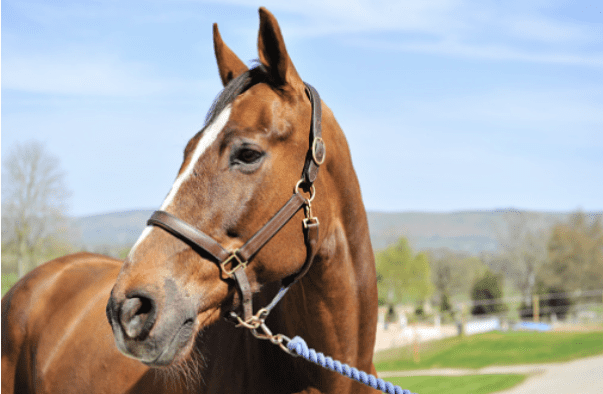
Leather halters are more common among the showing community, because besides the fact of them being sturdy, they are more physically appealing. Keeping this in mind, leather halters do tend to run up the price tag depending on the types of leather used. Aside from their obvious appeal, the leather halter is a functional tool that is considered to hold great value.
Over nylon halters, the leather halter is considered to be much safer when it comes to those clumsier horses. While it is safest to turnout your horses with absolutely nothing on their head, leather halters are a much better option if you decide to go down this route. Compared to nylon halters, the leather material is much more “forgiving,” meaning that if your horse was to catch a foot or get tangled, they are much more likely to break away. Remember, this only happens with true leather materials, and not synthetic leather halters. Now, you might be thinking; “Why would I buy an expensive halter that is just going to break during turnout,” and while this deduction is completely valid, leather halters are fairly easy to mend once broken.
While you won’t get the same color options as a nylon halters, leather halters do come in a large array of types, from economically conscious leathers, to the top of the range, made to last leathers. The more expensive leathers tend to come with special accoutrements such as padded nose and cheek pieces, gold-plated name tags, and more. Due to the fact that most leather halters are made by hand, they are most often customized to perfectly fit the needs of your horse’s aesthetic.
Leather halters are fairly easy to clean but do require a routine clean to keep their shape and color in the long run. As long as you routinely clean and maintain your leather halters, they will be in your barn for years to come. One thing to note about the leather material is that over time, leather can stretch and weaken if not taken care of. Keeping this in mind, it is important to always check your older gear before use to avoid any breakages during practice.
Leather halters are among the most appealing on the market, with the ability to be perfectly customized to your horse, just be ready to spend a little extra cash.
Breakaway Halters
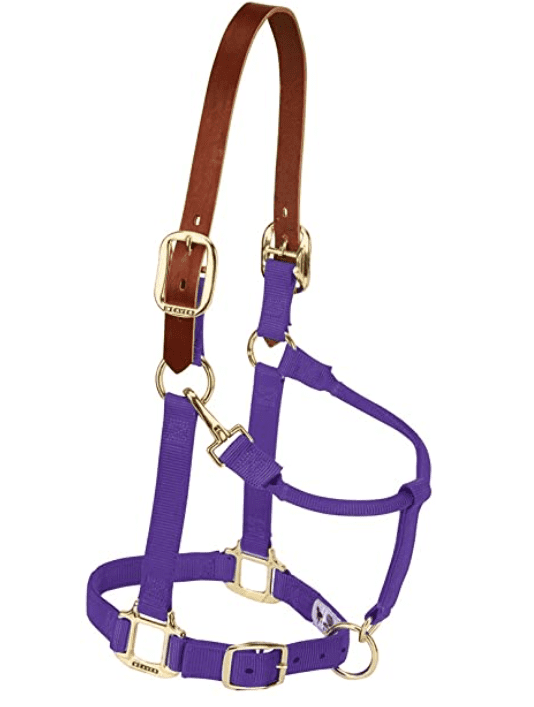
When it comes to turning out that “you’re never going to catch me,” horse, breakaway halters are your best bet. As mentioned before, it is safest to turnout without any head equipment, but for some this just isn’t an option. For those in dire need of a turnout halter, the breakaway halter is one that keeps both parties safe.
The halter is made of either nylon or a cotton-blend webbing material, secured by a leather crown piece or leather tabs that keep the halter in place when applying. These leather pieces are crucial in the construction of this halter, as they can break away from each other when a large amount of pressure is placed on them in a rather rapid manner. When a horse gets caught or tangled in the pasture, the breakaway halter is designed to, as the name suggests, break off from the head allowing the horse to get out of harm’s way. When it really comes down to it, this halter can make or break a horse’s fate if they were ever to find themselves in a high-risk entanglement. It might seem silly to buy a halter that is specifically designed to break, but this is exactly why you should purchase this product. Compared to the leather halter, which also can breakaway in a high-risk situation, the breakaway halter is designed to break in a particular area, which allows for the halter to be mended thereafter. Replacement pieces run fairly inexpensively and are often easy to find at your local tack shop, getting you back out to training within no time at all.
As there are many halters to choose from it came become overwhelming to decide which one best suits your equestrian needs. When purchasing a new halter, it is easier when you keep in mind these few simply characteristics; the level of training of which both horse and rider are currently at, the discipline of work that is being completed, and of course always leave a little room for personal preference. So, whether you’re buying a new training halter for that feisty young colt, or a fancy new leather one for your best jumper, always be sure to know what you’re purchasing beforehand.
This Article was originally published in the March 2021 Issue of Irish Sport Horse Magazine.
